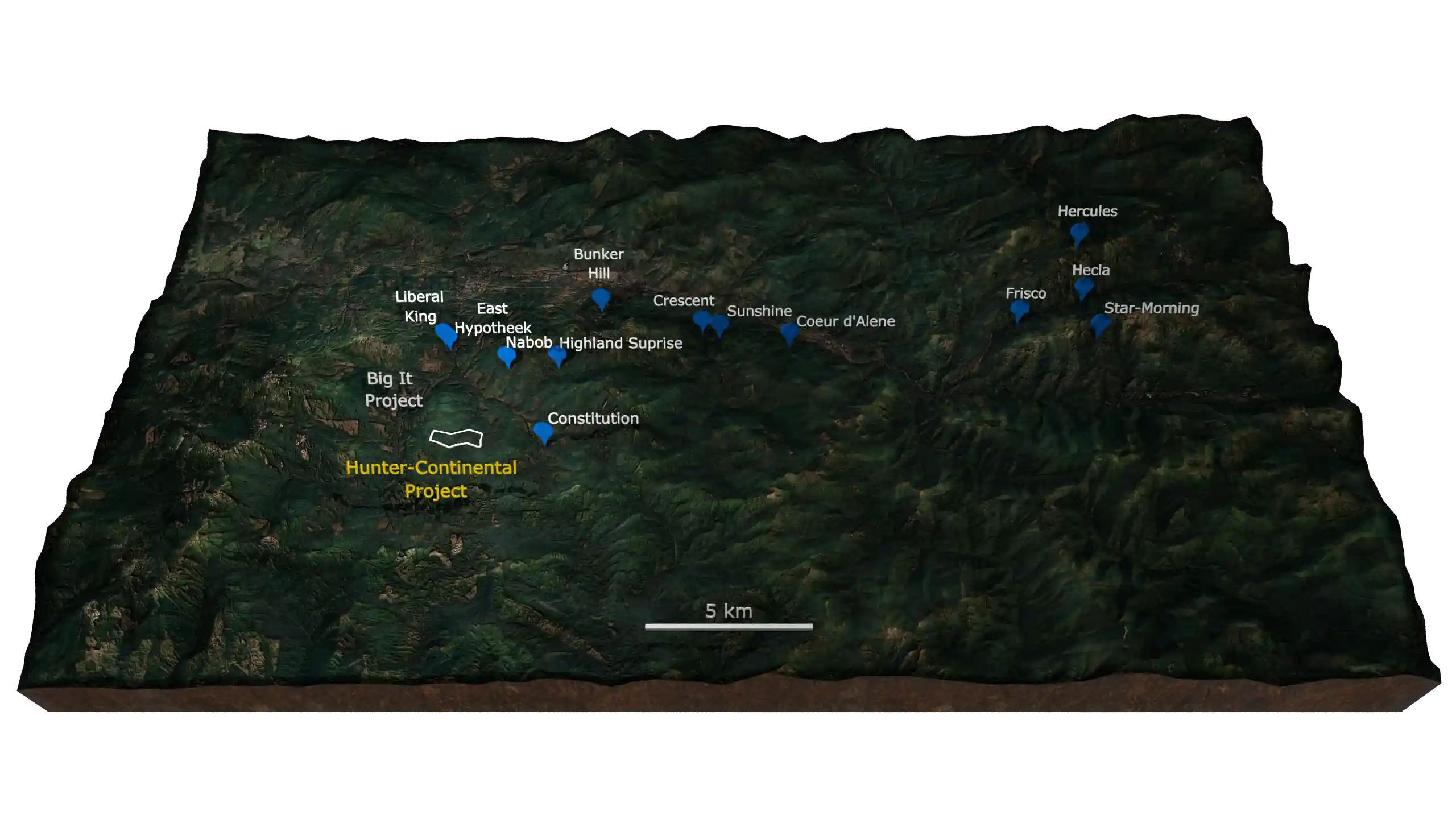Hunter Continental is a Silver Valley Type exploration project located in the Pine Creek district of Idaho’s Silver Valley. The property package consists of 22 unpatented federal mining claims which cover a strike length of over 3,000 feet of historically described silver-lead mineralization. The mineral system is hosted within the Revett and Burke quartzite formations, the same units that host the majority of the silver-lead mineralization throughout the entirety of the Coeur d’Alene mining district (i.e. Bunker Hill, Sunshine, Galena, Hercules, Morning-Star, and Page mines).
There is very little data on this property and the Company has not recovered any geochemical samples of interest on the property yet. We are very excited about this project, however, due to the following factors: 1) Historic data suggests there is high grade mineralization at depth on the property that was found through tunnelling, 2) the project is hosted in the Burke and Revett Formations, the same units that host the vast majority of significant Silver Valley ore bodies, and finally, 3) the structure which hosts the mineralization strikes directly at the Douglas Mine, indicating that it likely had access to the same fluids that formed other Pine Creek mines.
Basically, the Pine Creek District of the Silver Valley experienced a significant flow of metal rich hydrothermal fluids, comparable to that experienced by other districts within the Silver Valley. The majority of these mineralizing fluids were expended creating fissure veins in the Prichard Formation, which is not a particularly good host because of its rheology (softness). The Company believes that Hunter Continental has significant potential because it is located at the ideal junction between the preferred host rocks, the Burke and Revett Formations (brittle quartzites), and a fault which carried Pine Creek metal rich hydrothermal fluids.
The major source of historic assay data, a report by Don Gillis described below, may be questionable because we do not have his source material and he was not independent. Despite this, the Company believes this property has sufficient geologic merit to explore with geophysical methods, and depending on results, diamond drilling.








